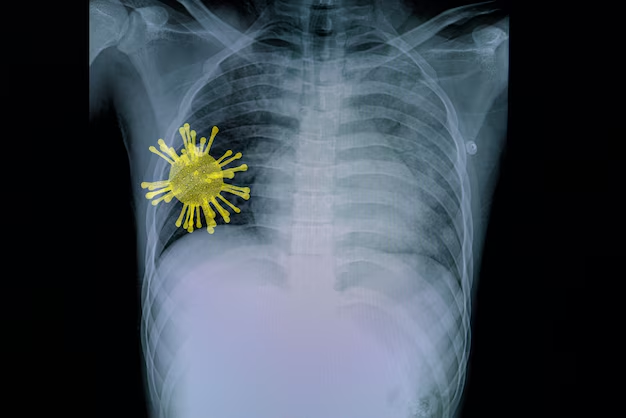How Does Mycobacterium Tuberculosis Travel? Understanding Its Pathways and Impact
Tuberculosis (TB) has been a persistent challenge for global health, claiming the title of one of the top infectious diseases affecting millions worldwide. The causative agent, Mycobacterium tuberculosis, has evolved to efficiently exploit human biology and social behavior, making it crucial to understand how it spreads. Recognizing the pathways and mechanisms of its travel isn't just an academic exercise; it's key to controlling its spread and maximizing prevention efforts. Let's delve into how this microscopic organism nimbly traverses environments to ensure its survival and propagation.
The Path of Infection: Airborne Transmission
The Basics: Air as the Vehicle
Mycobacterium tuberculosis is primarily an airborne pathogen. This means its most favored mode of travel is through the air, utilizing the respiratory droplets emitted by an infected individual. When a person with active TB coughs, sneezes, or even talks, they release thousands of microscopic droplets. These droplets can linger in the air for hours, especially in poorly ventilated spaces, waiting for another human host to inhale them. Unlike some respiratory pathogens that require close contact, TB can spread over greater distances, increasing its infectious potential.
Indoor Environments: A Breeding Ground
Closed environments, such as homes, prisons, hospitals, and other crowded settings, facilitate the spread of TB. Inadequate ventilation exacerbates this risk, allowing infectious droplets to accumulate. This is particularly true in regions with limited resources where upgrading ventilation systems isn't feasible, making TB spread more rampant in lower-income nations.
The Role of the Immune System: Not All Exposures Lead to Disease
A Silent Traveler: Latent TB
While many may be exposed to Mycobacterium tuberculosis, not everyone develops TB disease. The immune system plays a crucial role in containing the bacteria. In most cases, the pathogen cannot bypass the body's defenses, resulting in latent TB. Here, the bacteria remain dormant without causing symptoms and can't be transmitted. It's estimated that around a quarter of the global population carries latent TB, representing a vast reservoir for potential activation into active disease, especially if the immune system weakens.
Factors Influencing Activation
Certain health conditions, such as HIV, diabetes, or malnutrition, can compromise immune function, increasing the risk of latent TB converting to an active form. Additionally, lifestyle factors (e.g., smoking or excessive alcohol use) and medications that suppress the immune system can enhance vulnerability.
Routes of Spread: Beyond the Air
While airborne transmission is primary, examining secondary avenues provides a fuller picture of TB’s movement. Understanding these subtle routes offers insights into comprehensive control strategies.
Human Mobility and Socioeconomic Factors
People migrating from high TB prevalence areas to regions with lower rates can inadvertently transport the disease. Global travel and migration play a role in disseminating TB across borders, complicating elimination efforts. Socioeconomic disparities, overcrowded living conditions, and limited healthcare infrastructure can contribute to localized outbreaks.
Animals and Zoonotic Connections
While Mycobacterium tuberculosis primarily infects humans, other relatives within the Mycobacterium family can affect animals. In some instances, animals can act as reservoirs or vectors, posing a zoonotic threat. Bovine tuberculosis, caused by Mycobacterium bovis, is an example where transmission from cattle to humans can occur, usually through unpasteurized dairy products.
Control and Prevention: Strategies to Curb TB’s Spread
Understanding the travel mechanisms of TB aids in devising effective preventive measures. These strategies emphasize early detection, treatment, and minimizing exposure risks.
Vaccination and Medical Interventions
The BCG vaccine is deployed in many countries to protect against severe TB forms in children. While not always effective against pulmonary TB in adults, it remains a cornerstone in global TB control strategies. Additionally, preventive therapy for individuals with latent TB can halt the progression to active disease.
Public Health Policies and Ventilation
Improved ventilation in public spaces, routine screening, and contact tracing are pivotal in reducing transmission rates. Countries with robust TB control programs encourage early diagnosis and adherence to treatment regimens. Directly Observed Therapy (DOT) ensures compliance and reduces drug resistance, a growing concern in TB management.
Addressing Social Determinants
Mitigating TB requires addressing the social determinants that facilitate its spread. Ensuring access to basic healthcare, nutrition, and economic development in vulnerable communities can decrease TB incidence. Reducing stigma associated with the disease encourages more individuals to seek timely treatment.
Advanced Insights: Research and Future Directions
Modern research continues to uncover how Mycobacterium tuberculosis operates, offering new avenues for intervention.
Genetic and Molecular Studies
Advancements in genomics provide insights into TB's evolution and adaptability. Identifying genetic markers linked to drug resistance helps tailor treatment and monitor emerging resistant strains. Molecular epidemiology aids in tracking transmission patterns, informing targeted interventions.
Technological Innovations
Innovations like novel diagnostic tools enable rapid and accurate TB detection, critical for early intervention. Mobile health technologies facilitate remote monitoring and support for patients, enhancing treatment adherence in hard-to-reach areas.
Global Collaboration: A Unified Approach
The battle against TB demands global cooperation. Collaborative efforts between governments, NGOs, and international organizations are essential in pooling resources, sharing knowledge, and implementing unified strategies for TB control and eradication.
The Future Outlook: Hope and Challenges
While the journey to eradicating tuberculosis is fraught with challenges, science, and humanity's collaborative spirit offer hope. Emerging treatments, improved diagnostics, and a better understanding of TB's travel patterns can turn the tide against this age-old affliction. However, sustained efforts, investment, and a focus on health equity are crucial to assure that Mycobacterium tuberculosis finds fewer opportunities to travel and flourish.
Summary of Key Takeaways
- Pathway: TB primarily spreads through airborne particles; improve indoor ventilation to decrease transmission risk. 🏠
- Latent vs. Active: Not everyone exposed develops disease—understanding immune dynamics is crucial. 🛡️
- Social Impact:Global travel and socioeconomic factors play significant roles in TB's dissemination. 🌍
- Prevention:Vaccination, public health policies, and socioeconomic improvements are pivotal strategies. 💉
- Research:Genomics and technology offer new insights and tools for TB prevention and management. 🔬
These insights underline the importance of multidimensional approaches to combat TB, emphasizing prevention, treatment, and global collaboration.
